Early Bird
Deadline
January 31, 2026
Judging
Date
May 18, 2026
Winners
Announced
June 10, 2026
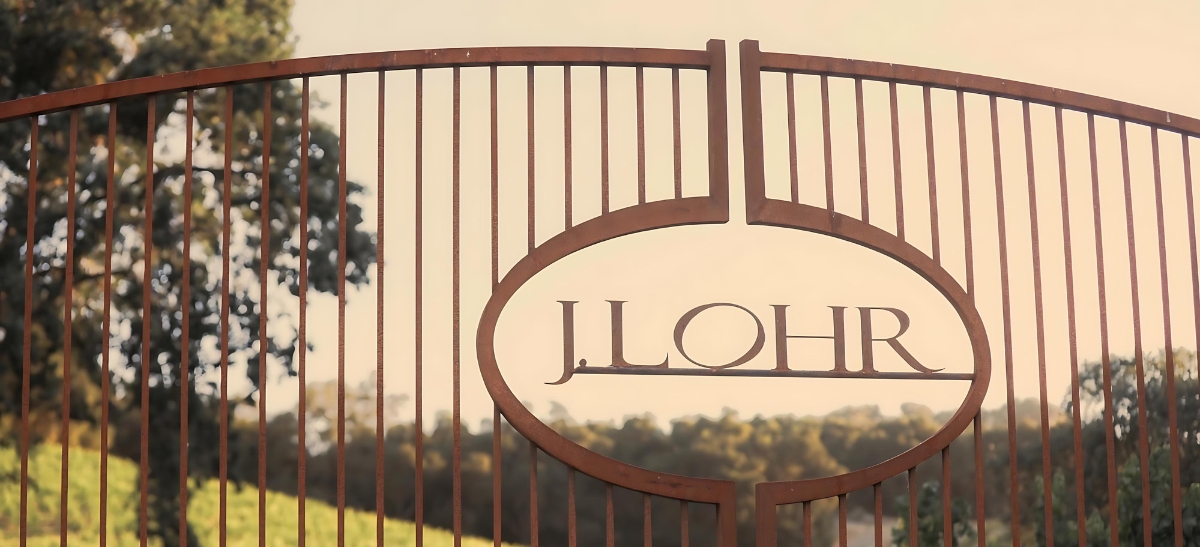
J. Lohr Vineyards & Wines celebrated its 50th anniversary in 2024. The still family-run company grows, produces, and bottles a line of internationally recognized wines from more than 4,000 proprietary acres of Certified California Sustainable vineyards in Monterey County’s Arroyo Seco and Santa Lucia Highlands appellations, Paso Robles, and the St. Helena AVA in Napa Valley. J. Lohr produces and markets wine in eight price tiers, costing between $13 and $100 per bottle. Founder Jerry Lohr chose Monterey County’s Arroyo Seco for his initial 280-acre vineyard plantings. With leadership from the Lohr family, Arroyo Seco was approved as an AVA within Monterey County in 1983.
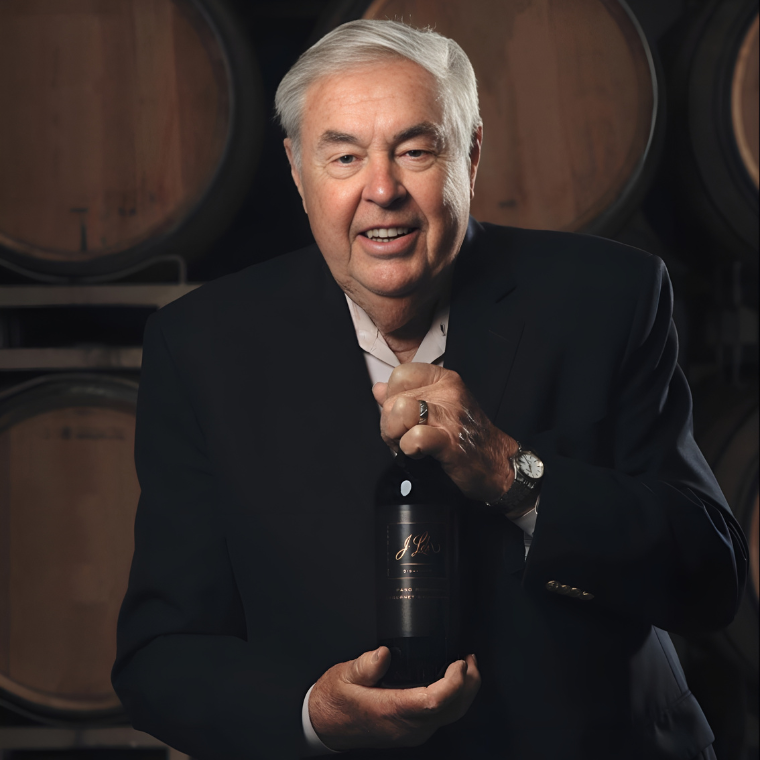
Image: Jerry Lohr
Jerry Lohr’s children long ago entered the business after working in other industries. Steve Lohr is now the company President and CEO and Cynthia Lohr is the Chief Brand Officer. Both believe in a broad definition of managing a sustainable company within the US wine industry. They speak of the three E’s of sustainable wine-growing operations. There is the environment, protecting natural resources. The second E is social equity within the company and the industry. Critically, the third is economics. As Steve Lohr stated in an interview with Progressive Grocer in 2022: “The economics is the part some forget about, but it is very important because if you can’t make a buck at what you are doing, you aren’t going to be around very long and that’s not sustainable.”
Cynthia and Steve Lohr found time in their busy schedules to have a conversation with editor Charlie Leary. The three-spoke via Zoom in mid-August. Below is Part One of the interview.
The Lohrs provided insights into the importance of the on-premise trade and sommeliers, their view of sustainability, the J. Lohr vertically-integrated business model, which has encouraged organic company growth, the sweet spot for wine prices, and the challenges currently facing wine businesses. J. Lohr Vineyards & Wines produces about 1.7 million cases annually. Their hour-long conversation has been edited for conciseness.
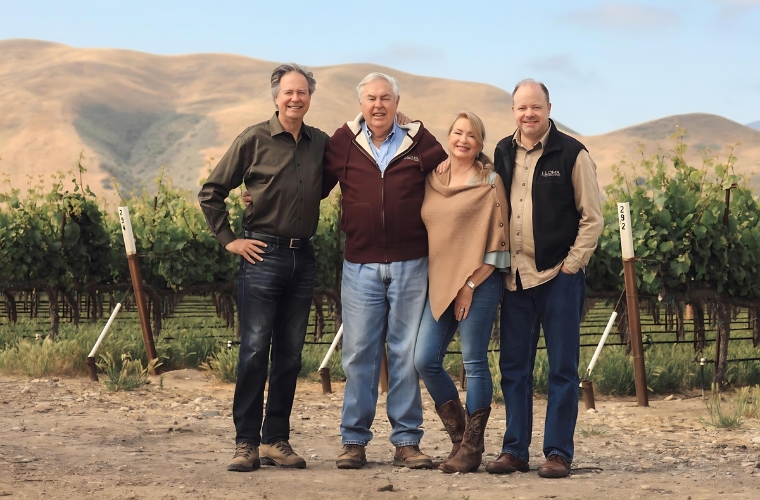
Image: (L-R) Steve Lohr, Jerry Lohr, Cynthia Lohr, and Lawrence T. Lohr
Steve Lohr: Well, first of all, the on-premise [market] is incredibly important. This year we celebrate 50 years as a family-owned and operated winery. And so we first built our brand on-premise, not in stores, but on-premise. We are very much believers that if you succeed in on-premise, the off-premise will follow.
[Another example is] Phil Markert, the alcoholic beverage buyer for Albertsons, Vons, and Pavilions supermarkets. So, [he covers] basically all of Southern California. He always looks to see what's doing well on-premise. And if there are certain varieties that do well there, he puts them in the store, knowing that they'll do better.
We have worked very closely with sommeliers over the years. And all of our [sales] folks will probably spend at least 50% of their time in restaurants. We're constantly educating sommeliers because we believe in education ourselves.
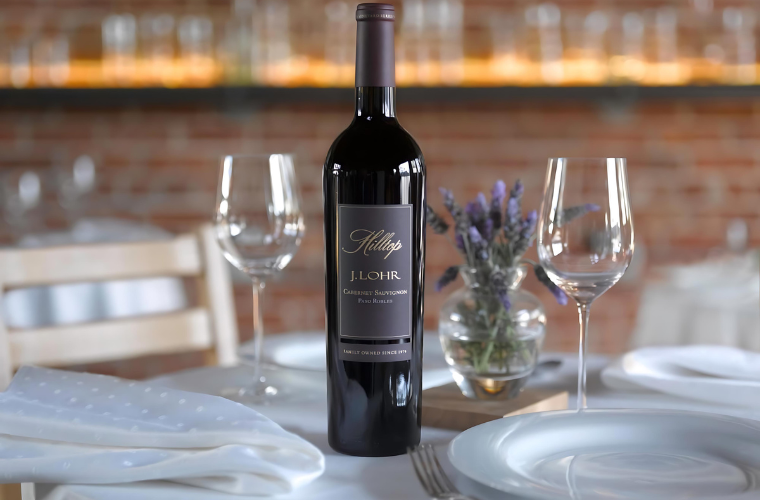
Cynthia Lohr: And Charlie, I'll embellish. I'm actually meeting with a sommelier later this afternoon who runs wine services for a private social club I belong to in San Francisco. I've had some pretty extensive talks with him about serving the needs of the club, for instance, and serving the needs of the patrons. And so you were asking earlier about “what are some of the [on-premise] trends,” or “what's happening with the role of the sommeliers.” I'm observing that there are a couple of things going on.
The sommelier needs to always be focusing on their bottom line, of course, but continuing to provide value and opportunity to their patrons; but that walks a fine line between pulling from existing inventory—staying in a bit of a safe zone—and not pushing past to some of the newer appellations because they need to go with a tried and true opportunity.
So, we're in a really unique time right now because with economic concerns, with the political climate, with excitement around new appellations, finding that balance between what's going to provide tried and true value to guests versus what's going to be a little bit more experimental and take guests out of their comfort zone. Walking that fine line, I find, is really challenging right now.
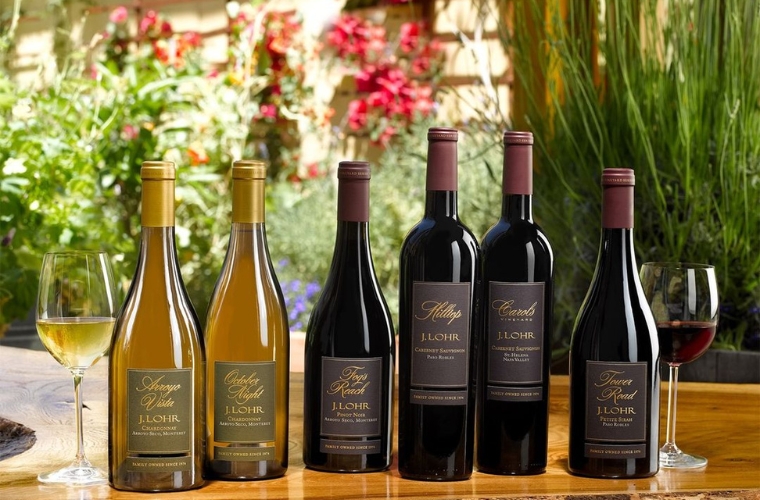
Steve Lohr: Yes, it absolutely does, Charlie, in that we do have wines that at retail go anywhere from 13 to 100 dollars a bottle. And the sweet spot is still 15 to 20 dollars at retail. Multiply that price by three or whatever factor you have in whatever state or country you're in. That kind of experimental price point is so important because wine in the US, unfortunately, is on the downtrend. And it's down about seven or eight percent altogether across all wine, all price points. So to have something that's really high quality, but in that 15 to 20 dollar price range is so key.
Especially for what we do, you know, we're “produced and bottled by,” so we grow our own grapes, we make all of our own wine. . . . If people like our Seven Oaks Cabernet Sauvignon, it's a natural entree to just spend a little bit more for the Hilltop Cabernet, reserve-level Cabernet from our vineyards at Paso Robles. And at $35 a bottle, it's fantastic value. We'll put it up against $100 bottles from other appellations any day of the week.
Cynthia Lohr: And regarding the differentiation between our two Marquis tiers . . . you can think of the trade-up as a natural one as the consumer gets more into their wine journey and wants to both experiment and also try wines at a higher price point that may have more bespoke practices behind them.
Steve Lohr: Yes, unfortunately, I would agree. It may not be quite as bad on the West Coast as it is on the East Coast, but yes, with difficulty in finding labor, restaurants are having to really spread themselves thinly.
We've seen margins on wine go up to the point where I'm actually really worried, you know, about consumers enjoying wine because it used to be three times the retail price you put on the menu, but we're seeing four and five times now. And people are just feeling a little bit like they're being taken advantage of. So that's a really big concern.
And when COVID-19 did first take place. Yes, one of the quickest cuts that happened was the sommelier. . . . Restaurants have been slower—I wouldn't say slow—but slower to adopt the return of the rich resources they had in sommeliers before. That said, I think that, and Cynthia alluded to this earlier, that the sommelier who can walk that fine line between having wines that are known for quality and consistency and value, as well as all the experimental things you want, even a Garagiste [winemaker] or something like that. Those who can walk keep their jobs, and consumers look to what they have to present.
Cynthia Lohr: I'm also finding, Charlie, that some of the somms that I know are translating their thought leadership in the wine industry into more online education and thought leadership pieces, finding new revenue streams associated with their thought leadership. So it is a really interesting time. And yes, I think in high-profile restaurants, where the guests can expect to have the insight and expertise of a somm, that continues, but there have been some restaurants that I have seen that have dramatically cut back. And it is sad to see.
What's also happening, is that in some of the restaurants, there's basic wine level education without somm certification being the standard for that guest experience. So, while not [having] a credentialed somm, that [basic] level of wine education is more pervasive now. This is a good thing because I think we can all bear some basic if not more advanced education [and] understanding.
[[relatedPurchasesItems-61]]
Steve Lohr: Yeah, well, I would say it's successful for us for the long term. Right now, some of these other models are working pretty well though. Those vinted and bottled-by models, where somebody else is actually making the wine, and then you're able to buy in bulk and blend it, that's never been us because that's not authentic. But boy, when you had a bumper crop here in ‘23, of really high-quality fruit, and that was just two years after one of the best vintages of this century, 2021, there's a lot of good wine out there to be had at very approachable prices.
So, you can buy bulk wine at far below the cost of production, blend it, have pretty nice wine out there, and not have a whole lot of costs, not have all those assets [committed]. Therefore, right now it's tougher to be in the business that we're in, but I think for the long term we'll be there when some of those other brands may not, as wildfires and climate change all become issues, where fruit quality may be compromised, or certainly not as available, and/or more expensive in coming years.
Cynthia Lohr: I'll add to that, and thank you Charlie for the compliment. You know, I think being a family-owned and -operated business allows us to be highly focused and nimble, and it is our ethos of sustainability to always look to prudent growth. We are venue-driven, we're not marketing-driven. Our particular equation of fiscal health and everything we do absolutely informs our quality. Just as Steve mentioned earlier, the fact that we grow, produce, and bottle is part of what allows us to maintain and always improve our quality.
Therefore, whereas it is a challenge right now in the industry, all factors considered, we feel good about our particular strategy because it has worked for us for 50 years and it has allowed us to evade being a commoditized brand. We all know the Faceless Wine Brand Du Jour. We are not that, and we stand proudly behind the fact that we are not that.
Steve Lohr: Yeah, so from the very beginning, we were very terroir-based, sometimes to our peril, in that when we started in the early 1970s—and I was there with dad to plant our very first vineyards in Monterey County—we knew we wanted to plant Chardonnay and Riesling because quite frankly, some of our neighboring friends . . . who had vineyards within a mile of us were doing well with those varieties.
But we wanted to plant Cabernet Sauvignon and Merlot too. That's where we first learned about the importance of terroir.
Even though we had some UC Davis professors who said, “Hey, yeah, go for it. You should be fine. It may be a little cool there, but you should get some good color and flavor.” Oh my gosh, that Cabernet was so bad. Loaded with bell pepper and asparagus. It was just too cool to properly ripen. That's what led us to Napa Valley in 1984, because we wanted to go with a sure thing, and we landed right in the sweet spot for Cabernet, St. Helena. Whether it's St. Helena, Oakville, Rutherford, those areas are golden.
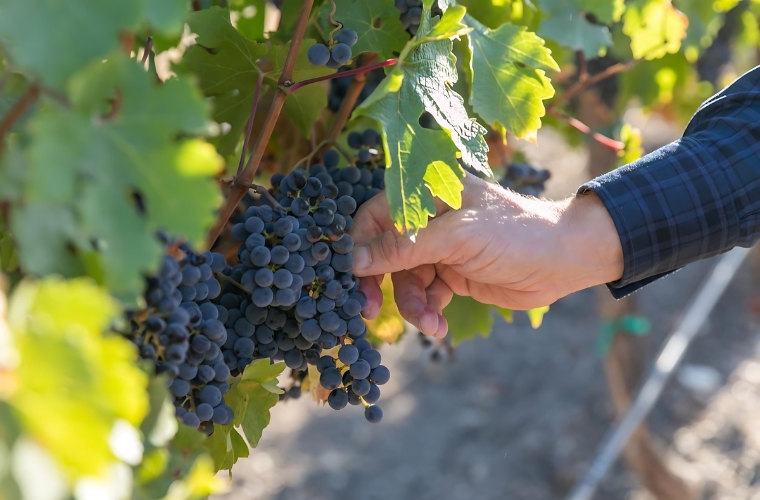
But we [also] wanted to experiment, and we loved the terroir-driven expression of Cabernet that was coming from Paso Robles. That is slightly more fruit-forward. It's not taking anything away from Napa Valley because we're still Napa Valley grape growers, but there's a softer tannin profile to Paso Robles wines, which again, being on-premise focused, we really wanted to go that direction because these were wines that, once they were bottled, you didn't need to hold them for a year in your restaurant cellar to make them really go well with whatever you're serving. They're ready to go right there. So, terroir was a key feature of our growth and, quite frankly, identity over the years.
Cynthia Lohr: And Charlie, frankly, Jerry [Lohr]'s passion for soil profiles, stemming from his early years growing up in South Dakota, is what drives his selection of growing sites. And Steve has been deeply involved in that, as have others, which has brought us to approximately 40 distinct vineyard plots throughout our appellations. And by a matter of nuance, terroir-driven nuance, we're in five of the sub-appellations in Paso Robles precisely for that ability to differentiate in our almost 41 wines.
Steve Lohr: Related to that, I would say it also informs our look at the future in that we've been, you know—knock on wood—very successful with our Seven Oaks Cabernet Sauvignon. When you get to the case level that we have with that particular wine, and quite frankly, it's a million case-a-year SKU, normally when you go to that seven-figure SKU level, you're no longer appellate. You go to the California designation. I don't really know of any other Cabernet, certainly not Paso Robles, or even California, at a million cases that is one AVA, Paso Robles. They're all going up [to broader AVA levels] to the North Coast or California [appellations]. So that's how important terroir is to us.
Cynthia Lohr: And another marquee, Charlie, is that the 2023 vintage at that million cases will be certified California sustainable as are 29 of our other wines. So we invest really heavily in this highly curated best practice around terroir-driven wines.
This extensive interview will be continued in Part Two.
All photos courtesy of J. Lohr Vineyards & Wines
Enter your Wines now and get in front of top Sommeliers, Wine Directors, and On-Premise Wine Buyers of USA.
